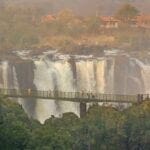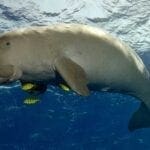Malawi is a landlocked country; much of which lies within the Great Rift Valley of eastern Africa. With Tanzania to the north, Zambia to the west, and Mozambique to the east and south. Although landlocked; it has the ninth largest lake in the world. And the third largest and second deepest lake in Africa; Lake Malawi.
The most popular place to visit in Malawi for a holiday is Lake Malawi. With its sandy beaches, crystal clear waters, resorts, water sports, and a huge variety of fish. However; Malawi also has several game reserves and national parks. Which are well stocked with wildlife and have a variety of birdlife; with over 600 species recorded. These include Liwonde National Park, Nyika National Park, and Majete Wildlife Reserve.
Malawi is one of Africa’s smaller countries (a little over 117 000 square kilometers); of which about 20% is occupied by Lake Malawi. At its lowest point, the country is only about 35m above sea level. Its highest point, Mount Mulanje, is over 3 000m above sea level. These great contrasts help to make the landscape of Malawi one the most varied in all of Africa.
Malawi’s geography is sculptured by Africa’s Great Rift Valley. Towering mountains, lush, fertile valley floors, and enormous crystal-clear lakes are hallmarks of much of this geological phenomenon. And Malawi displays them all.
Regions
The country is split into 3 regions and the scenery varies in each.
The Northern Region is mountainous, with the highest peaks reaching over 2500m. Most magnificent of all the highlands is the Nyika Plateau. With its rolling landscapes in the center of the plateau. The other great highlands are the thickly forested slopes of the Viphya Plateau.
Lilongwe is the main entry point for international flights, and it is in the Central Region. It is surprisingly ‘green’, to the extent that sometimes you wouldn’t guess you were in a commercial hub. For all the trees and grassy areas. This is also the country’s main agricultural area. Lilongwe became Malawi’s capital in 1975, a role previously filled by Zomba.
From Lilongwe, you can easily get to Cape Maclear, Lake Malawi National Park & Salima.
Southern Malawi includes Blantyre and is the most populated, developed, and varied region. It is also the part that shows the greatest European influence. North of Blantyre is Liwonde National Park.
South Malawi is a region of physical contrasts. With the River Shire dominating much of the area. On its journey southwards, the Shire crashes over falls and rapids (which hindered David Livingstone’s upstream journey in the past). But has its more leisurely stretches through broad plains.
South Malawi is certainly not all plains and valleys. This is the region of Malawi’s highest peak, Mount Mulanje, which rises to nearly 10000ft (3000m). Impressively, Mulanje is only seventy miles from Malawi’s lowest point, just over 100ft (30m). Not too far from Mulanje is the region’s other great massif, the Zomba Plateau. This table-like mountain is over 6000ft (1800m) above sea level with sheer scarp-like edges.
Best time to travel in Malawi
For most people, the dry (winter) season is the most attractive time to visit (i.e. April/May to October/November). The chance of rain is slim. Daytime temperatures are generally pleasant (in the 20s Celsius). The low vegetation and limited availability of water mean that game viewing is at its best.
However, some of the best bird watching can be had from November to April. The orchids of Nyika are best seen from December to March/April. Malawi’s temperatures are dictated by altitude and in the areas. For example; Zomba, Nyika, and Viphya; it can be quite cold at night. In the hottest month (usually November) maximum temperatures will be around 30°C. The hottest area, all year, is that at the lowest altitude; the Lower Shire Valley.














